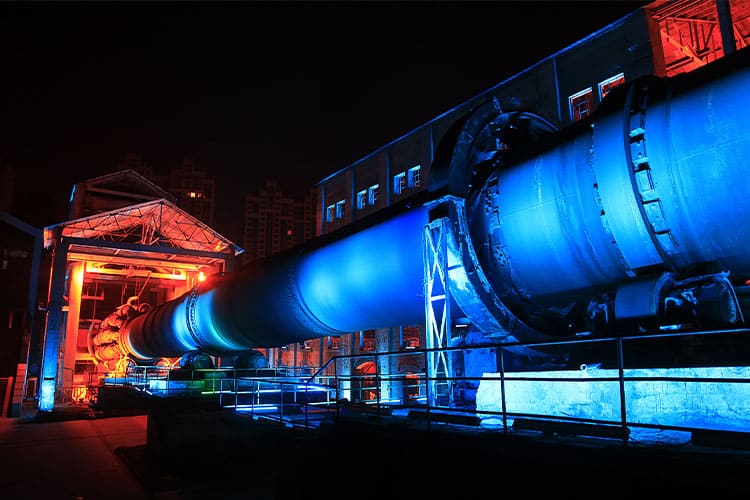Concrete, one of the oldest building materials, used by every civilization since ancient Rome, continues to be a fundamental material in the contemporary construction world. Many experts say that concrete is the second most commonly used material on Earth after water.
“Concrete has a lot of properties that are quite remarkable,” said Dr. Emanuela Del Gado, a professor at Georgetown University who investigates complex materials like concrete using a combination of statistical mechanics and computational modeling. “Just think that you take a powder, you mix it with water, and, at room temperature, it turns into something that has the consistency of stone. Within a few hours, you can basically walk on it.”
Aside from the convenience of use, concrete’s material properties make it essential to contemporary construction practices. “Even if it becomes very dense,” Del Gado said, “it keeps a network of very fine pores of different sizes, and these pores are very important for insulation, thermal insulation, acoustic insulation and resistance to the surrounding environment.” These are properties that make it essential in the planning and construction of most structures.
Concrete’s carbon footprint
But concrete’s ubiquity comes at an environmental cost. Concrete is a major source of carbon dioxide levels in the atmosphere, contributing what some estimate to be as high as 8% of worldwide human-generated emissions of the gas. “Concrete isn’t necessarily that bad in terms of carbon production,” Del Gado said. “It’s just that we use so much of it.”
Manufacturing the cement powder, which has to be combined with ground limestone and water to produce concrete, creates carbon output at every step of production. “The production of clinker, the main ingredient of cement, requires limestone to be heated to very high temperatures in the cement kiln,” said a spokesperson from Swiss multinational building materials corporation LafargeHolcim Ltd. “This causes the limestone to decarbonize, and it is this chemical reaction that is responsible for 60% of carbon emissions from ordinary clinker manufacturing. Fossil fuels used to heat the kiln also produces CO2 emissions.”
Del Gado said that some of the carbon emissions associated with the production of concrete are created by additional considerations such as the fossil fuels necessary to transport the materials to construction sites across the globe, as well as the impact made by the high energy requirements of industrial concrete manufacturing. “Roughly speaking, a ton of cement corresponds to a ton of CO2,” Del Gado said. “And we use several billions of tons of concrete each year.”
At LafargeHolcim, the company has been focused on combating the environmental issues associated with concrete production since 1990. It says it takes pride in being one of the most carbon-efficient manufacturers in the marketplace.
“We continue to reduce our carbon footprint by reducing our clinker-to-cement ratio and consuming less energy per ton of product by using alternative fuels and improving the efficiency of our processes,” the LafargeHolcim spokesperson said, adding that the company focuses a lot of its research and development process toward creating reduced carbon solutions at every stage of the concrete production process.
One of the latest fruits of this effort is a partnership with Solidia Technologies to create what the spokesperson described as “a new binder produced at lower temperatures and through a different chemical reaction that generates 30% less CO2 than ordinary Portland Cement.” The spokesperson continued: “Solidia Cement hardens through the addition and absorption of CO2 in a patented curing process that reduces the overall carbon footprint by up to 70%.”
A complex solution
For Del Gado, Solidia—as well as similar materially oriented solutions to the problem of concrete and carbon production—represents a step in the right direction. “This idea of doing construction with cement that can absorb and store CO2 during setting is interesting,” Del Gado said, “because it shows that people are thinking about how to pay the price of the fact that you are using a material that’s environmentally impactful. I think it’s an interesting solution.”
In Del Gado’s view, however, if the industry really wants to commit to reducing the carbon impact of concrete production, bigger changes need to take place on a regulatory level as well as a shift in society’s mindset when it comes to how the industry approaches issues of safety and sustainability.
“If you want to solve this problem, there is not one solution that will do it,” Del Gado said. “There needs to be more research on what the solutions are. And this is what I do; this is my way to try to address the problem. But it’s become very clear that we need to combine this with policy actions such as carbon taxes and adjustment of codes in construction.”
As the LafargeHolcim spokesperson added, paying attention to the CO2 emissions of concrete has an effect far beyond the environmental influence of the manufacturing process alone. “Using reduced CO2 concrete helps to decarbonize the entire construction value chain,” the spokesperson said. “Which can make a huge difference as it’s reported that 40% of worldwide CO2 emissions are derived from the building sector.”
Combining new technologies with a focus on creating a strong regulatory framework for innovation seems to be the key to reducing the carbon impact of one of the world’s oldest and most effective construction technologies.











